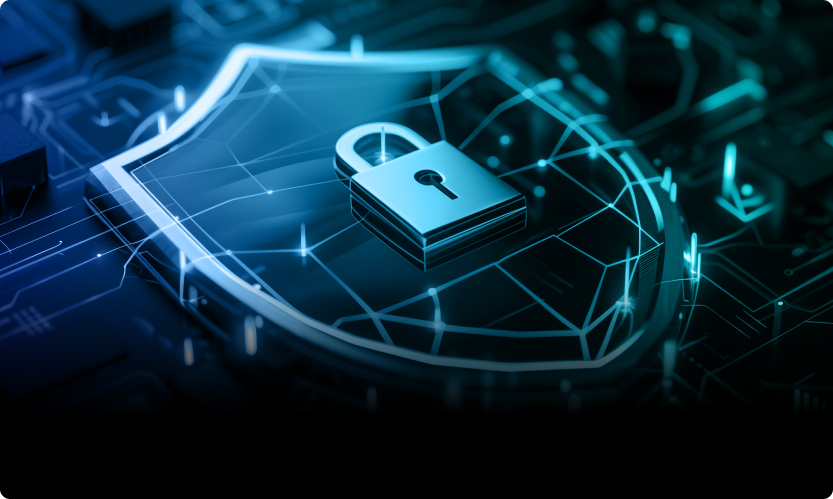
The cybersecurity landscape is the real battlefield where threats evolve at an astonishing pace and challenge even the most sophisticated SOCs. Being the nerve center of enterprise defense, SOCs are involved with monitoring dashboards, responding to threats, and handling alerts.
However, with an overwhelming volume of responsibilities, traditional SOCs are struggling to keep up. This growing strain is accelerating the shift toward a transformative solution: the Autonomous SOC, where Artificial Intelligence (AI) takes the center stage in creating truly self-healing security ecosystems.
For years, the dream of a fully automated security system seemed like science fiction. But with rapid advancements in AI, machine learning (ML), and automation, that dream is now becoming a tangible reality.
Welcome to the age of the Autonomous SOC.
What is Autonomous SOC?
Imagine a Security Operations Center that doesn’t just spot threats—but also figures out how serious they are, decides what to do first, and even fixes the issue on its own. No waiting, no bottlenecks.
This isn’t about replacing security analysts. It's about giving them the time and tools to do what they do best. Let the AI handle the repetitive stuff, while your experts stay focused on the big picture. This is what Autonomous SOC does with AI implementation.
Sacumen offers AI-driven SOC for cybersecurity product companies—enabling faster threat detection and reducing false positives, all tailored to your unique operational needs.
The Breaking Point:
The traditional SOC is powerful but still hit a breaking point. With thousands of alerts per day, security teams were stretched thin to work over them. According to IBM, a company takes 204 days on average to discover the breach, adding 73 days more to contain it.
By the time action is taken, damage is often already done. The shift toward AI isn't optional anymore, it's essential.
Enter AI: The Engine Behind Self-Healing Security:
AI isn't just a buzzword in the Autonomous SOC; it's the fundamental engine driving its capabilities. Here's how AI fuels the self-healing process:
Picture this situation, where the user clicks on a phishing mail. Before the threat can cause damage, the SOC starts an action without any guidance.
- AI instantly detects suspicious behavior, such as a login attempt from an unusual IP address.
- The system automatically isolates the compromised endpoint to contain the risk.
- Gathering threat intelligence from various sources to identify the threat’s origin and nature.
- A forensic snapshot is taken, and the exploited vulnerability is automatically patched.
- The user even receives targeted security training to prevent future incidents.
This isn't just automation, it's true autonomy.
How the Autonomous SOC Works?
The Autonomous SOC isn't just a vision, it's a practical, intelligent framework for reshaping modern security operations. Here’s how it functions:
1. Data Ingestion and Analysis
With traditional methods, it often collects massive volumes of logs but struggles to take actions. But AI-driven analytics can correlate disparate events, identify anomalies, and distinguish real threats from background noise.
According to IBM, organizations leveraging AI for threat detection report a 30% faster time to detect and respond to breaches.
2. Proactive Threat Detection
Since AI models learn what “normal” looks like across the environment, it flags even the minor deviations. It allows real-time proactive detection of unknown threats, including zero-days and sophisticated polymorphic malware.
Did you know? Gartner predicts that by 2026, 75% of SOCs will leverage AI/ML for tier-1 event triage.
3. Automated Incident Response
Once a threat is confirmed, the Autonomous SOC can trigger autonomous actions such as:
- Isolating endpoints
- Revoking credentials
- Blocking IPs
- Rolling back system changes
4. Continuous Learning and Adaptation
After learning from every incident, fine-tuning its models to stay ahead of emerging attack patterns. Over time, this results in faster, more accurate, and more adaptive defense mechanisms.
According to a Forrester report, “Enterprises leveraging adaptive AI models saw a 30% improvement in threat detection accuracy compared to the previous year.”
5. Reduced Alert Fatigue
AI filters out noise by automating triage and remediation for routine incidents, significantly reducing false positives. This allows human analysts to focus on complex, high-risk threats, rather than being overwhelmed by low-priority alerts.
The Future Is Now: Autonomous SOC
The Autonomous SOC is no longer theoretical—it's actively shaping the security landscape today. Industry leaders are heavily investing in AI-driven platforms like Sacumen's AI-driven SOC service that promise faster detection, smarter responses, and greater operational efficiency.
The message is clear: the future of cybersecurity is intelligent, adaptive, and automated.
But let's be clear—this isn’t about removing humans from the equation. It's about amplifying their impact. With AI handling the heavy lifting, security teams can focus on high-level strategy, incident forensics, and staying ahead of ever-evolving threats.
In short, this isn't a distant vision—it’s already unfolding. And organizations that embrace it now will be better equipped to thrive in a threat landscape that demands speed, precision, and resilience.